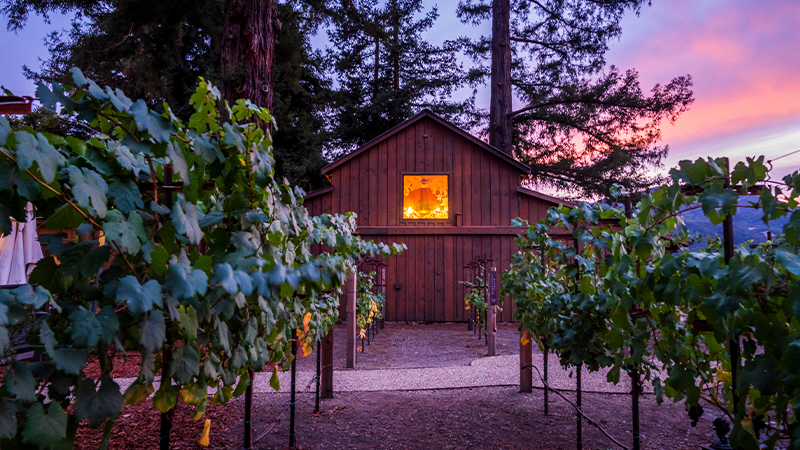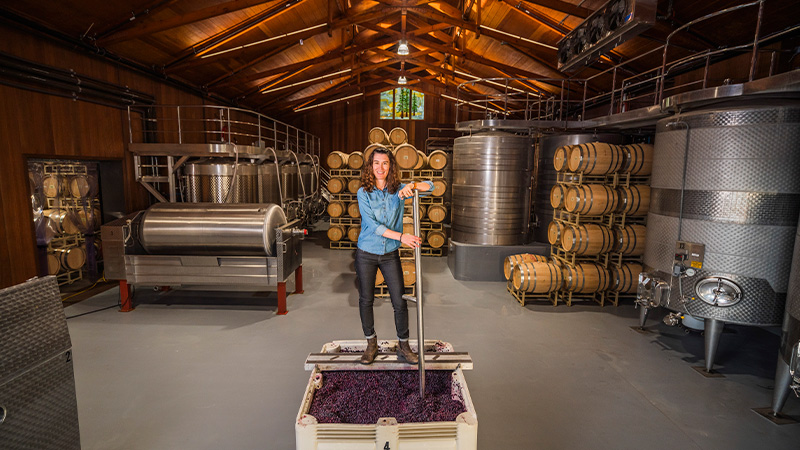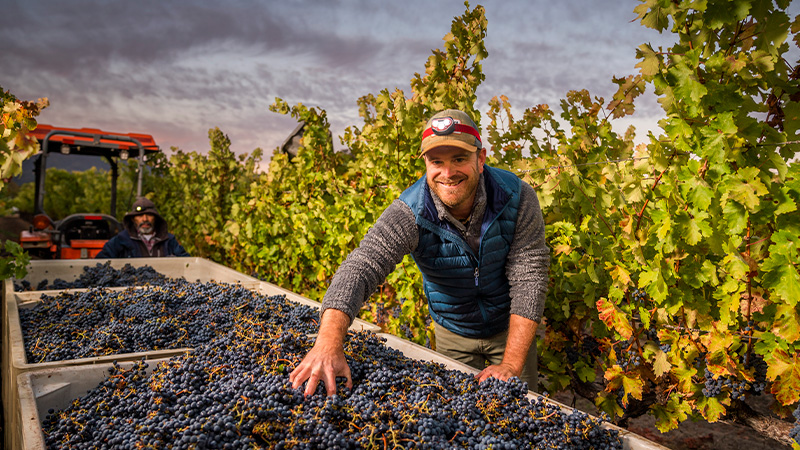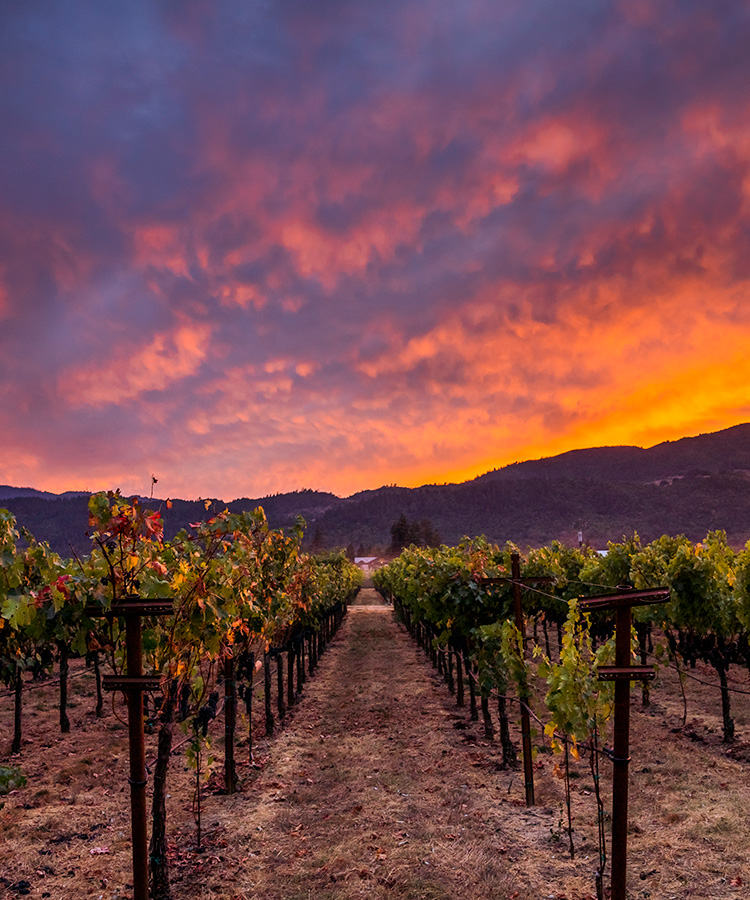
It is no secret that Napa Valley produces some of the world’s best Cabernet Sauvignon. However, for those looking to pick a great bottle of wine for dinner, trying to wade through the sheer number of Napa bottles featuring the “King of Red” can be overwhelming. How does one even know where to begin when staring at multiple shelves full of Cabernet bottles?
Here is one tried-and-true trick: If you see a bottle of Sequoia Grove grab it. Wine lovers who are looking for a classic fruit-forward Napa Valley Cabernet should permanently place this Rutherford Valley winery on the top of their go-to wine lists.
Sequoia Grove Napa Valley Cabernet is known for its rich balance of soft tannins and full flavor. A velvety concentration of plum and dark berries immediately hits the taste buds at the first sip. The deep ruby liquid then coats the tongue with a seemingly endless arc of flavors that flow into a rich, tannic, complex finish. The bottle leaves you with no doubt that this family-owned winery is making some of the best wine in the region.
Great wines start with great grapes, and Rutherford Valley is in an ideal location to produce vibrant Cabernet Sauvignon. Since as far back as 1865, vines were planted in the gravelly soils left by an ancient stream known as the Rutherford Bench. The area’s temperate climate of warm afternoons, cool evenings, and long summer days offset by early morning fog helps produce grapes bursting with earthy flavors, balanced acidity, and smooth tannins. Add to that its complex soil composition that allows for excellent water retention, and it is no wonder that the Rutherford AVA is well known for its balanced Cabernet.

The origins of Sequoia Grove Winery date back to 1979 when James and Barbara Allen bought a 24-acre estate along with a 110-year-old barn beneath a sequoia tree grove in Rutherford, Napa Valley. The winery officially began operations the following year when James’s brother planted multiple acres of Chardonnay and Cabernet vines along with a modest amount of Petit Verdot, Cabernet Franc, and Merlot.
Less than 10 years later, Sequoia Grove won “Best American Cabernet Sauvignon” in the American Wine Competition and “Winery of the Year” by the International Wine Review. Not bad for a winery with less than a decade’s worth of winemaking under its belt.
The Kopf Family purchased Sequoia Grove Vineyards in 2002. Since then, the wine has scored countless 90+ point scores and the 2015 Napa Valley Cabernet was a Wine Spectator “Top 100 Wines” award winner. In 2017, the family invested $15 million for renovations that more than expanded and greatly increased the winemaking potential of the original winery.
Fast-forward to today when a young, innovative wine team is crafting wines that emphasize the elegance, finesse, structure, and balance emblematic of the renowned Rutherford AVA. At the helm of the dream team is Molly Hill, the winery’s young and innovative winemaker and vineyard manager Jake Terrell, a recognized leader in green viticulture. The three work together to continuously elevate the quality of the wine, starting in the winery’s 100 acres of estate vineyards.

“I have the same goals as the winemakers,” Terrell said. “We’re all working together to make the best wines that reflect unique, diverse terroir all while taking care of our employees and the environment.
Over the past four decades, the winery has made substantial efforts to advance the strength of its vines. Careful attention is given to soil type, root stock, and clones during planting to grow grapes that fully express the area’s dynamic terroir. Hill’s job is to carefully take those grapes and blend them together to produce well-structured, elegant wines. A balanced wine is of utmost importance to Hill.
“Balance to me means nothing stands out — not alcohol, not tannin, not acid, nor fruit, nor barrel,” she said.
Sequoia Grove recently purchased the 21-acre State Lane Vineyard in the nearby, prestigious Yountville AVA. The new vineyard is less than four miles away from the winery, which allows team members to easily farm the land and quickly transport grapes to the crush pad.
“This is a significant milestone in our history, and another notable development and investment in the new compelling chapter of Sequoia Grove,” winery president Rick Bonitati said.
The winery’s consistent philosophy of making wines with varietal character that are reflective of the terroir helped establish Sequoia Grove as one of the premier Cabernet Sauvignon producers in Napa Valley. Knowing that they are stewards of the land where they grow these grapes, the team is dedicated to protecting it for future generations. Sequoia Grove is 100 percent powered by renewable energy, and both the vineyards and winery hold Napa Green certifications. In addition, their estate vineyard has a Fish-Friendly Farming certification.
The coastal redwood tree that graces each bottle is more than a brand icon — it is a symbol of persistence and fortitude as well as a representation of the narrow strip of land off the California Coast that the sequoia groves thrive in. That is why the winery donates a portion of sales to 1% For the Planet® to help preserve habitat for the threatened sequoia coastal redwood trees.

Not ones to rest on their laurels, the winery team is focused on continuous improvement over all aspects of operations. For visitors, this means new interactive education sessions that focus on food and wine pairings. From the recently added “Terroir Tasting” featuring vineyard-designated Cabernet Sauvignon paired with cuisine, to the compelling “Cabernet Culinary Challenge,” and classic offering of “A Taste for Cabernet,” visitors have multiple ways to swirl, sniff, and sip their glasses of Cabernet.
“No matter what we’re trying to achieve, the renovations and upgrades have provided our team with tools for us to succeed — be it winemaking, viticulture, sustainability, or the visitor experience,” Hill said. “To me, that speaks volumes about what Sequoia Grove Winery stands for.”
This article is sponsored by Sequoia Grove.
